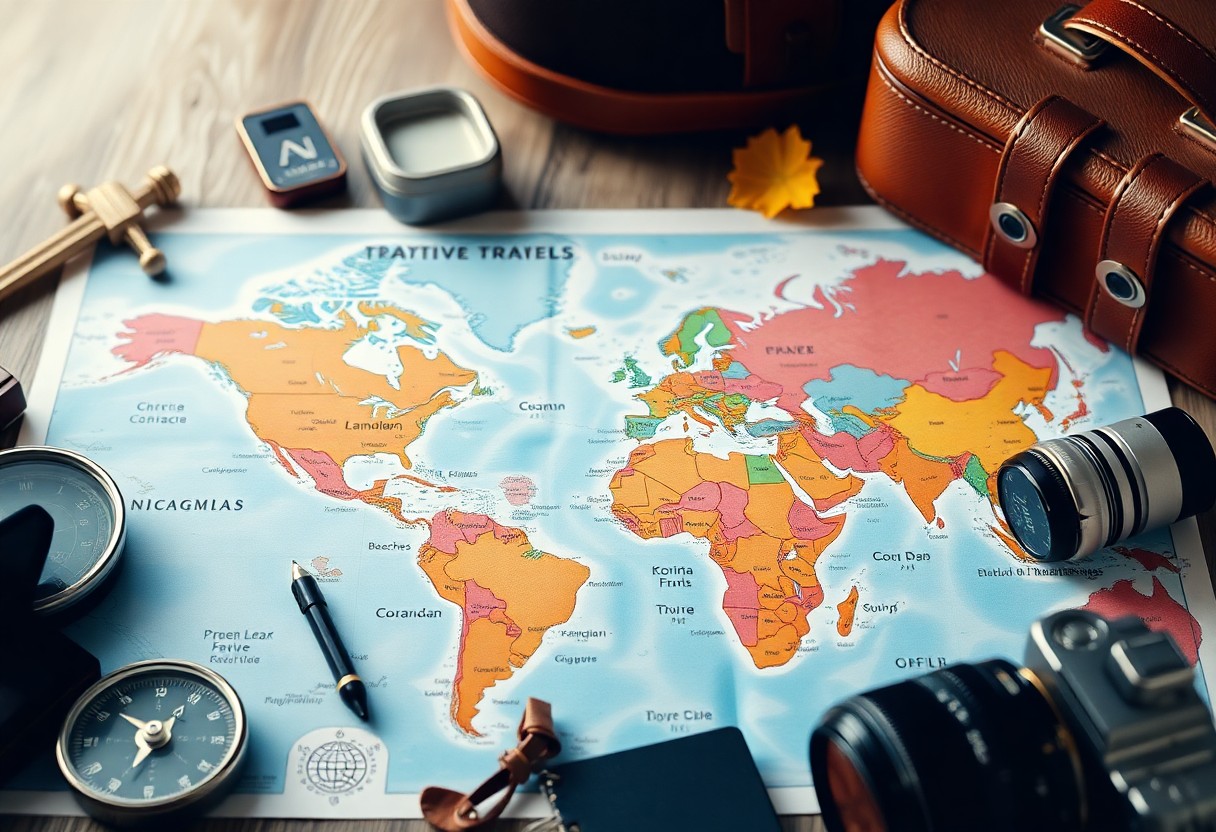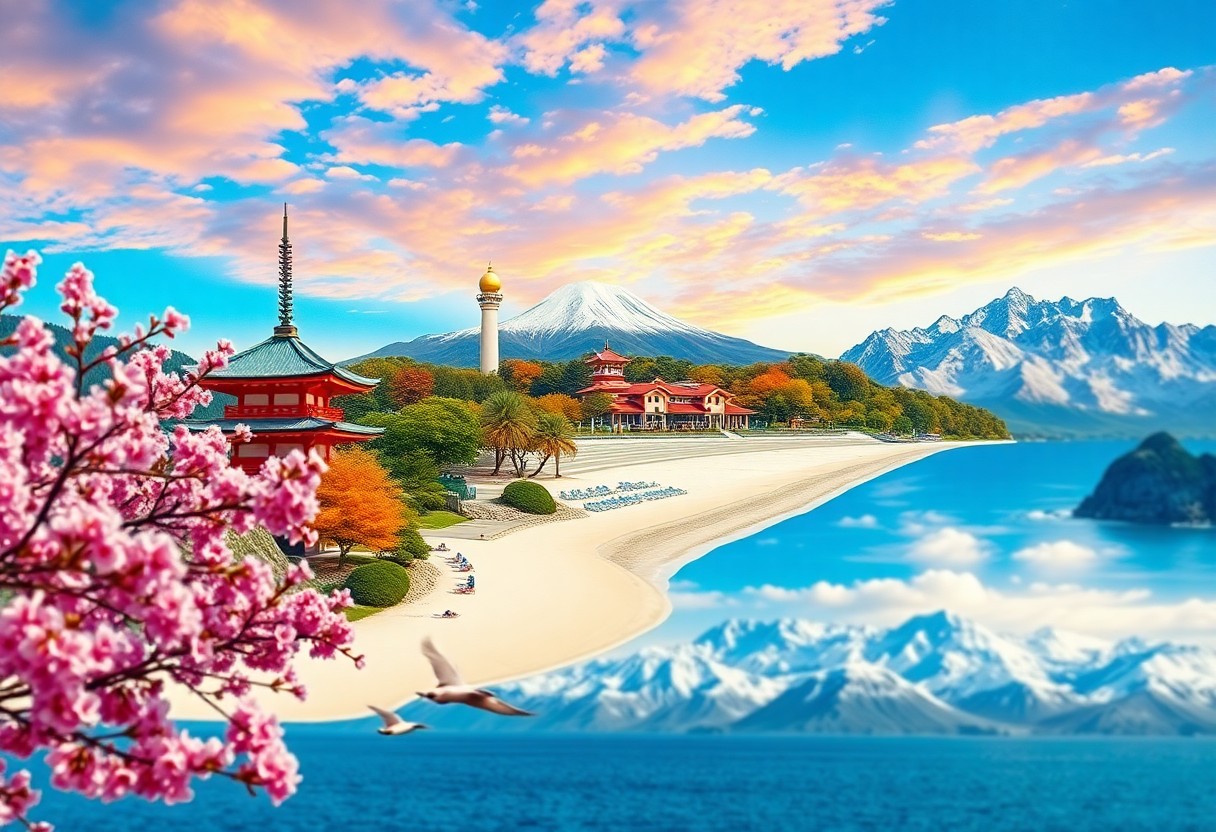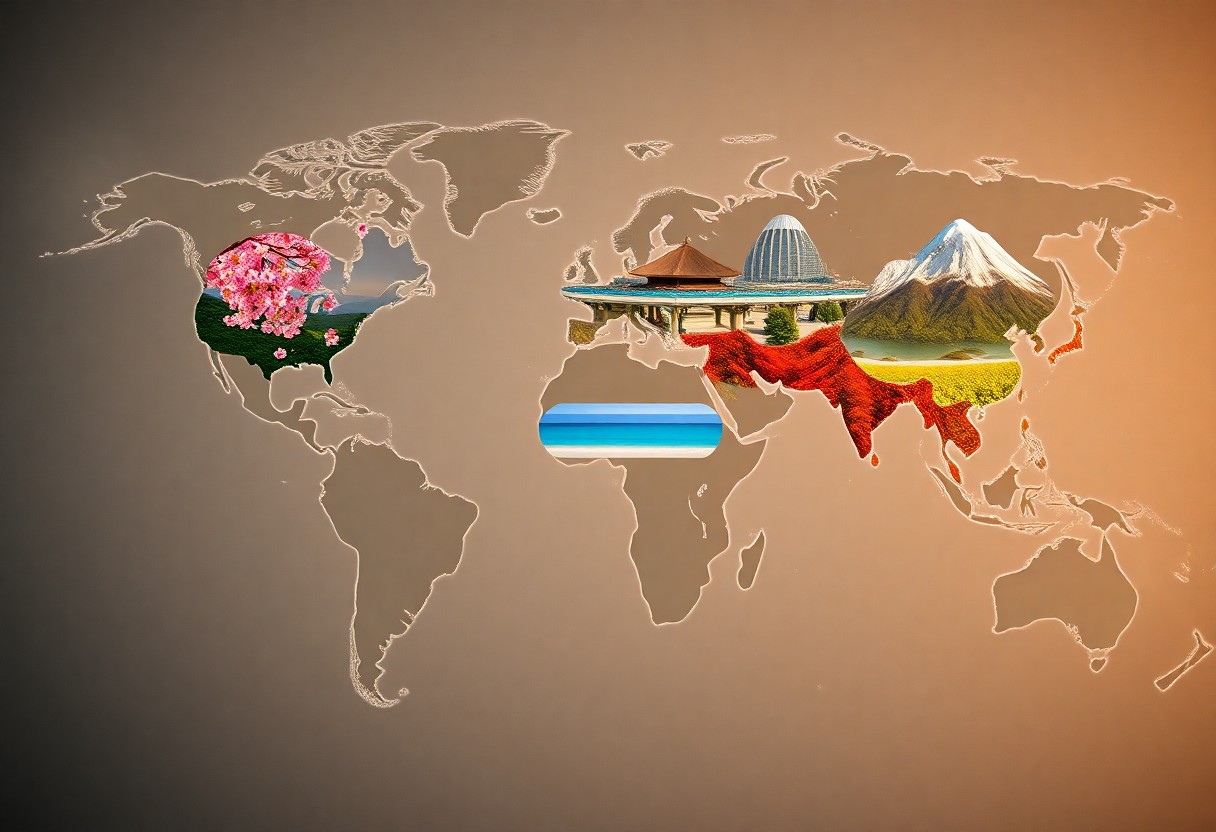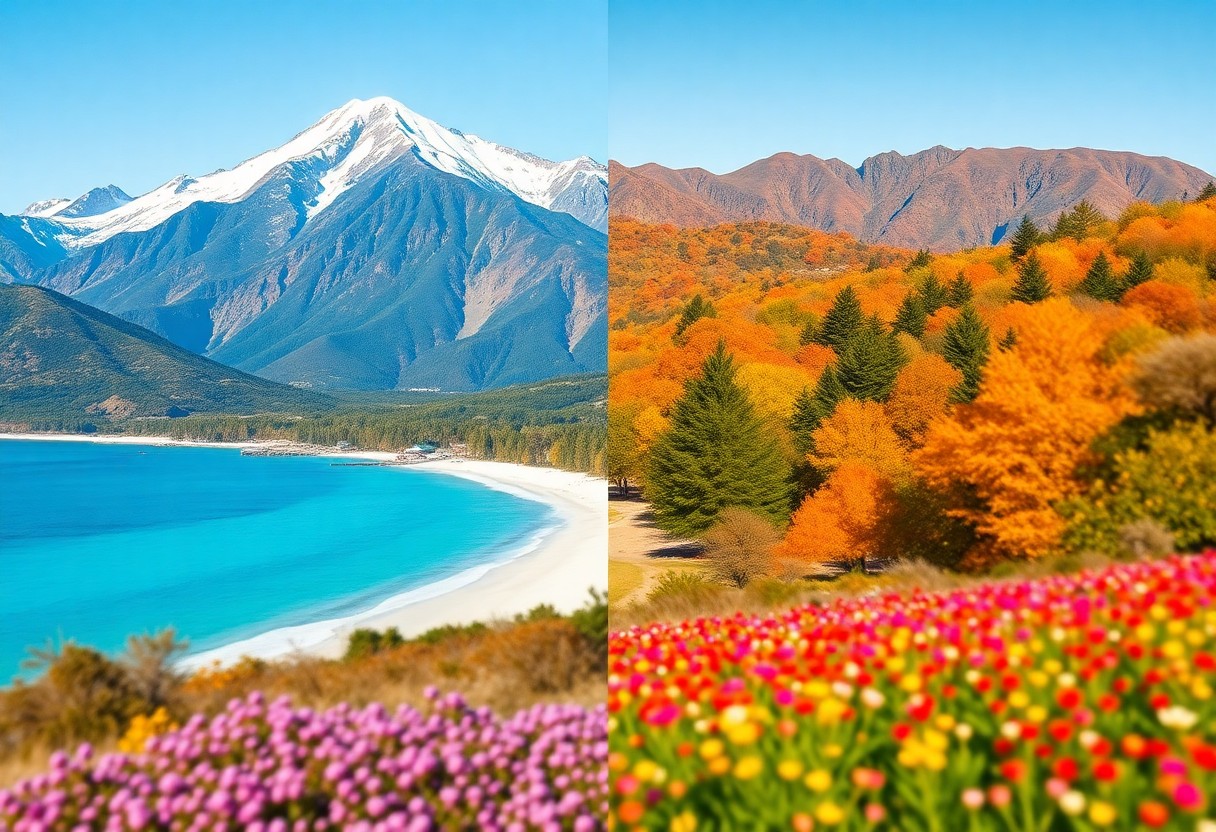
Most travelers seek the perfect moment to explore new destinations, and understanding seasonal patterns helps you make the most of your journeys. By aligning your travel plans with ideal weather, festivals, and crowd levels across regions like Europe, Southeast Asia, North America, the Caribbean, and South America, you can enhance your experiences and avoid common pitfalls. This travellers guide empowers you to identify the best times to visit each locale, ensuring your adventures are both enjoyable and memorable.
Key Takeaways:
- Europe’s shoulder seasons (April and October) offer mild weather, fewer crowds, and reduced prices, ideal for urban and countryside exploration.
- Southeast Asia’s dry season (November to April) provides optimal conditions for beach and cultural activities across mainland and island destinations, despite regional variations.
- North America’s diverse climates demand tailored travel timing: summer and autumn shine in the north, while spring and autumn are best for southern states and Mexico.
- The Caribbean’s peak travel period from December to April coincides with dry weather and major festivals, minimizing hurricane risks and maximizing beach enjoyment.
- Seasonal patterns across all regions influence not only weather but also cultural events, service availability, and pricing, shaping the overall travel experience.
Europe’s Seasonal Dynamics
Europe’s diverse climates and cultural rhythms shape travel experiences across the continent. You’ll find that timing your visit affects not only weather but also crowd sizes, pricing, and event availability. From the mild days of spring and autumn to the bustling summer months and festive winter periods, each season offers distinct advantages. Whether exploring art-filled cities or natural landscapes, syncing your itinerary with Europe’s seasonal nuances ensures you encounter the highlights under optimal conditions.
Shoulder Seasons: The Sweet Spot for Travelers
April and October stand out as Europe’s shoulder seasons, delivering comfortable temperatures between 10°C and 20°C alongside fewer tourists. Cities like Paris and Rome quiet down, letting you enjoy world-famous sites without the usual crowds. In the countryside, you witness spring wildflowers or autumn vineyard colors, while coastal spots like Croatia and Greece remain accessible for swimming and sightseeing. You’ll also benefit from accommodation discounts of up to 30% and cheaper flights to less busy regional airports, creating a perfect blend of value and experience.
Navigating Summer Crowds versus Winter Charms
Summer brings long daylight hours and lively festivals, but popular destinations swell with tourists, inflating prices and crowding landmarks. Temperatures often climb past 30°C in southern cities like Madrid and Athens, prompting midday breaks in cool museums. In contrast, winter offers serene landscapes adorned with Christmas markets and ski resorts bustling in the Alps and Dolomites. Urban sites stay open with shorter lines, while northern regions like Lapland reveal the aurora borealis, though daylight hours shrink dramatically. Your choice hinges on balancing vibrant energy against quiet enchantment.
Delving deeper, summer peaks in July and August along Mediterranean hotspots like Venice and Barcelona challenge you to arrive early if you want peaceful moments. Northern Europe counters the heat with milder weather and the midnight sun phenomenon, allowing extended outdoor activities. Conversely, winter’s allure shines in festive traditions and snow sports, yet some coastal towns close down, reducing accessibility. Budget-conscious travelers capitalize on hotel rates that can drop by 50%, and while daylight is limited, cultural institutions remain inviting. This seasonal contrast demands flexible planning but rewards with uniquely memorable experiences whichever way you lean.
Here is a comprehensive table summarizing the seasonal sweet spots for travel, aligning popular regions with their best times to visit based on weather, events, and unique experiences:
| Region / Destination | Best Time to Visit | Seasonal Highlights & Reasons |
|---|---|---|
| Spring (Mar-May), Fall (Sep-Nov) | Mild weather, fewer crowds, ideal for city exploration and cultural events | |
| Spring (Late Mar – Early May) | Cherry blossom (sakura) season, hanami celebrations, beautiful floral landscapes | |
| Spring (Late Mar – Early May) | Tulip fields in bloom, Keukenhof Gardens, King’s Day festival | |
| Summer (Jun-Aug) | Midnight sun phenomenon, extended daylight for sightseeing, cultural festivals like Secret Solstice | |
| Summer (Jun-Aug), Late Season (Sep-Oct) | Crystal-clear waters, vibrant nightlife, fewer tourists in late season | |
| Autumn (Sep-Nov) | Spectacular fall foliage, harvest festivals, scenic drives | |
| Autumn (Sep-Oct) | Wine harvest (vendemmia), truffle hunting, food festivals, mild weather | |
| Late Spring (May), Late Season (Sep-Oct) | Warm sea temperatures, fewer tourists, ideal for coastal exploration | |
| Late Spring (May), Late Autumn (Oct-Nov) | Perfect swimming temperatures, fewer crowds, historic sites exploration | |
| Late Spring (May), Mid-Autumn (Oct) | Warm temperatures, fewer tourists, excellent for beach and city exploration | |
| Spring (Apr-May), Autumn (Sep-Nov) | Ideal temperatures, vibrant markets, desert trekking | |
| Summer (Nov-Mar), Mid-Autumn (Apr-May) | Best for outdoor activities, safaris, whale watching, hiking | |
| Autumn (Mar-May) | Autumn foliage, moderate temperatures, seafood festivals (e.g., Havelock Mussel Festival) | |
| Shoulder Season (Jun-Aug) | Water activities, coastal relief from heat, fewer crowds inland | |
| Dry Season (May-Sep) | Clear skies, ideal for Machu Picchu and trekking | |
| Winter (Nov-Feb) | Comfortable desert temperatures, ideal for exploring ancient sites and Nile cruises | |
| Spring (Sep-Nov), Early Summer (Dec) | Warm temperatures, excellent beach weather, diving visibility |
Travel dreams with the best times to visit different regions, considering weather, cultural events, natural phenomena, and crowd levels to maximize travel experience123567.
Southeast Asia’s Climate Conundrum
Seasonal swings across Southeast Asia weave a complex tapestry for travelers. You’ll find that mainland countries like Thailand and Cambodia shift sharply between dry and wet seasons, while island destinations such as Bali and the Philippines follow distinct patterns. Navigating this patchwork can optimize your itinerary, balancing sunlit temple tours and lush, rain-soaked adventures. Balancing rainfall, humidity, and crowd levels within these microclimates shapes your experience, demanding both strategic timing and regional awareness to fully capture the region’s diverse charms.
The Advantage of the Dry Season for Travel
From November through April, the dry season blankets mainland Southeast Asia with consistently low rainfall and pleasant temperatures between 25°C and 35°C, perfect for outdoor exploration. You can savor temple complexes like Angkor Wat under clear skies and cruise calm waters of Ha Long Bay. This period also brings the highest tourist influx, especially in December and January, so early booking helps secure prime accommodations and tours. Indonesia’s Bali enjoys a reversed dry spell April to October, with August seeing only 16mm of rain, ideal for beach days and volcano hikes.
Embracing the Wet Season: Opportunities and Insights
Between May and October, monsoon rains transform Southeast Asia’s landscapes, creating vibrant greenery and dynamic waterfalls. Short, intense downpours usually last 1–2 hours, often clearing by afternoon. You’ll find fewer tourists and accommodation discounts up to 40%, particularly in cultural hubs like Luang Prabang and Chiang Mai. Wildlife thrives during this time, making rainforest treks in Borneo especially rewarding, while calmer waters around Vietnam’s Phu Quoc remain accessible for diving. However, marine conditions around the Andaman Sea grow rougher, tempering some water activities.
Extended rains rejuvenate Southeast Asia’s ecosystems, turning the terraced rice fields of northern Vietnam into lush emerald staircases and invigorating tropical waterfalls across Laos and Thailand. This season’s brief yet intense showers leave plenty of daylight for sightseeing and cultural immersion, often enhanced by fewer crowds and vibrant festival seasons. Wildlife watchers have the edge in Borneo’s rainforests, where orangutans and pygmy elephants become more active amid the refreshed foliage. While boat trips near Thailand’s Similan Islands face disruptions from rough seas, coastal escapes such as Phu Quoc maintain calm conditions, opening windows for safe water sports despite the prevailing monsoons.
North America’s Geographic Contrast
From the icy expanse of Canada’s Yukon to the sun-scorched deserts of Arizona, North America’s varied geography shapes its travel seasons dramatically. You’ll find alpine blooms beckoning in the Rockies during summer, while sprawling southern landscapes like Texas and Florida invite spring and fall visits to avoid sweltering heat. Coastal regions swing between California’s near year-round mildness and the Pacific Northwest’s concentrated dry summer season. This diversity means your ideal trip hinges on matching your destination’s microclimate with the right time of year, balancing weather, activities, and cultural events.
Maximizing Enjoyment in Northern and Southern Regions
Plan northern trips from June through September to catch Canada’s vibrant festivals and warm lakeside escapes, while early autumn’s foliage in New England offers stunning, crisp vistas. Meanwhile, southern states thrive in spring and fall when you dodge extreme heat; Texas’ bluebonnets bloom in April, and Mexico’s Day of the Dead celebrations paint October and November with cultural color. Winter months here can still offer mild coastal retreats, but watch for hurricane season risks along Gulf Coast beaches between June and November.
Seasonal Gems in the Pacific Coast
California’s Mediterranean climate means shoulder seasons like April–May and September–October provide quieter experiences and pleasant temperatures for wine country tours or exploring Channel Islands’ wildlife. The Pacific Northwest shines mid-summer from July to September, when rainfall drops and Portland’s outdoor food scene flourishes alongside hiking Mount Rainier. Winters offer a lush, misty ambiance, perfect for café culture in Seattle or tranquil rainforest visits, though shorter daylight hours call for flexible itineraries.
Diving deeper, California’s wine regions, such as Napa Valley, bloom with spring colors before the summer tourism surge, while fall harvest festivals offer rich, sensory experiences amidst temperate weather. Coastal drives along Big Sur become more relaxed in shoulder seasons, avoiding the summer crowds. In the Pacific Northwest, summer’s drier months reveal stunning mountain and coastal trails ideal for multi-day hikes, and cities like Seattle and Portland host vibrant music and food festivals that highlight the season’s bounty. Winter transforms this region into a rain-kissed wonderland, where you can enjoy indoor cultural gems while surrounded by lush greenery replenished by frequent showers.
Caribbean Bliss: Timing Your Escape
Choosing the right season to visit the Caribbean allows you to soak up sparkling beaches and vibrant culture without weather interruptions. The months from December through April deliver consistent sunshine and gentle breezes, while off-peak times offer quieter shores and lower prices. Navigating around hurricane season requires planning, but destinations like Aruba and Bonaire maintain dry conditions year-round. Balancing peak allure with calm retreat makes your Caribbean getaway uniquely tailored to your ideal blend of relaxation and celebration.
High Season Highlights: Festivals and Perfect Weather
From December to April, you’ll enjoy warm temperatures around 27°C alongside steady trade winds that keep humidity comfortable. This timing aligns with spectacular cultural events like Trinidad’s Carnival and Barbados’ Holetown Festival, infusing your trip with color and rhythm. Clear skies and minimal rainfall create perfect days for snorkeling off Jamaica’s coast or lounging on Nassau’s pristine beaches. Booking during this window means prioritizing vibrant atmospheres without the unpredictability of storms, ensuring your Caribbean moments are sun-drenched and lively.
The Risks of Hurricane Season and How to Avoid Them
Hurricane season spans June to November, peaking August through October, bringing unpredictable storms that can disrupt travel plans. The Caribbean’s eastern and southern islands generally experience fewer direct hits, making destinations like Aruba, Curacao, and Bonaire safer choices. Monitoring NOAA forecasts and securing flexible bookings reduces stress if weather shifts. Traveling early or late in the season—June or November—also lowers risk while benefiting from discounted rates. Awareness of local evacuation protocols and travel insurance coverage adds layers of protection during these months.
Hurricane impacts vary, with 2017’s Hurricane Irma devastating parts of St. Martin and Barbuda, exemplifying the power of late-season systems. Yet, the Caribbean’s diversified geography means you can still find shelter in less affected areas. Utilizing real-time tracking tools and choosing resorts with storm-resilient infrastructure improves your odds of uninterrupted enjoyment. Many islands emphasize preparedness, with rapid response service resuming tourism quickly post-storm. By aligning your visit with these insights, you’ll harness the beauty of the Caribbean while minimizing exposure to seasonal weather volatility.
South America’s Hidden Treasures
September to November unveils South America at its most inviting, where temperate weather and blossoming landscapes beckon adventurous travelers. You can explore Chile’s Atacama Desert under clear skies or venture to Argentina’s wine regions as vineyards awaken in spring. The cultural calendar flourishes with vibrant festivals, from Peru’s Cusco celebrations to Brazil’s quieter months before the carnival rush. For fresh ideas on timing your visit, see Where to go on holiday in spring: 17 destinations we love.
Springtime Wonders and Cultural Festivities
South America’s spring bursts into color with festivities like Argentina’s Fiesta Nacional de la Vendimia, celebrating the grape harvest amid temperate days averaging 15–25°C. In Peru, the Inti Raymi festival of the sun reawakens ancient traditions in June, while Ecuador’s outdoor markets brim with local crafts and fresh produce. Traveling during these months lets you immerse yourself in rich cultural tapestries without the peak-season crowds, enhancing your connection to both place and people.
Optimal Times to Explore Diverse Landscapes
Spring offers ideal conditions across South America’s varied terrains, from Patagonia’s thawing glaciers to Colombia’s awakening coffee plantations. Days lengthen, and rainfall decreases, providing perfect windows for hiking, wildlife spotting, and city touring. Coastal regions like Uruguay see pleasant temps near 20°C, making beaches accessible before summer heat and crowds arrive.
Beyond weather, aligning your trip with the continent’s ecological rhythms improves wildlife encounters—from pink flamingos nesting in Bolivia’s salt flats to whale watching off Chile’s coasts. National parks and UNESCO sites benefit from moderate visitor volumes and excellent trail conditions, enhancing your immersive experience. Planning your itinerary within this sweet spot maximizes both adventure and comfort during your South American journey.
Conclusion
Following this guide helps you align your travel plans with the best seasonal windows across diverse regions, enhancing your experience through optimal weather, manageable crowds, and cultural highlights. By considering each destination’s unique climate and peak times, you can tailor your itinerary to suit your preferences—whether chasing vibrant festivals, serene landscapes, or outdoor adventures. Thoughtful timing unlocks greater value, comfort, and memorable moments, empowering you to turn your travel dreams into well-rounded, rewarding journeys throughout the year.
FAQ
Q1: What are the advantages of traveling to Europe during the shoulder seasons?
A1: Traveling to Europe in the shoulder seasons of April and October offers mild weather, fewer tourists, and reduced prices. Temperatures typically range between 10°C and 20°C, which is comfortable for city sightseeing and countryside hikes. Additionally, popular destinations like Paris and Rome are less crowded, allowing for a more relaxed visit to major attractions. Accommodation and airfare often drop by 20–30%, making it a budget-friendly time to explore.
Q2: When is the best time to visit Southeast Asia for outdoor activities?
A2: The ideal period for outdoor activities across much of mainland Southeast Asia is the dry season from November to April. During these months, low humidity and minimal rainfall create favorable conditions for exploring temples, beaches, and natural landscapes. For Indonesia’s Bali and Lombok, the dry season runs from April to October, providing optimal weather for beach lounging and trekking. Travelers should also consider regional variations, such as the Philippines’ dry season spanning November to April.
Q3: How does North America’s vast climate impact the timing of travel plans?
A3: North America’s diverse geography means that the optimal travel time varies significantly by region. Northern areas, including Canada and the northern U.S., are best visited in summer (June to August) for outdoor festivals and natural exploration, or autumn (September to October) for fall foliage. Southern U.S. states and Mexico are more enjoyable during spring (March–May) and autumn (September–November) to avoid extreme heat and hurricanes. Coastal California offers year-round appeal, while the Pacific Northwest is best visited in the drier summer months.
Q4: What should travelers consider when planning a trip to the Caribbean?
A4: The Caribbean’s peak season from December to April features dry, sunny weather with temperatures averaging around 27°C and refreshing trade winds. This period is ideal for beach vacations and cultural festivals such as Trinidad’s Carnival. It also avoids the hurricane season, which runs from June to November, reducing weather-related disruptions. Travelers seeking fewer crowds and lower rates might opt for the off-season, but should be prepared for increased rainfall and storm potential.
Q5: Why is it beneficial to align travel plans with regional climates and cultural events?
A5: Aligning travel with local climates ensures more comfortable and predictable weather, which enhances the overall experience. Incorporating cultural calendars allows visitors to partake in unique festivals and traditions, deepening their connection to the destination. For example, visiting Europe in winter offers festive Christmas markets, while South America’s September to November window showcases blooming landscapes alongside cultural activities. This approach helps travelers make the most of their trips by balancing weather conditions, crowd levels, and authentic local experiences.
- https://supereagles.co.ke/2024/12/11/best-time-to-visit-a-destination/
- https://saasaro.com/blog/seasonal-travel-guides/
- https://www.wanderluststorytellers.com/best-places-to-travel-by-month/
- https://maddenmedia.com/mastering-seasonality-a-travel-marketers-essential-guide-to-peak-and-shoulder-seasons/
- https://nztraveltips.com/seasons-in-new-zealand/
- https://expatexplore.com/blog/when-to-travel-weather-seasons/
- https://airssist.com/choosing-right-season-travel/
- https://infrastructurist.com/best-time-to-travel-guide/
- https://www.agoda.com/travel-guides/philippines/discover-the-best-time-to-visit-the-philippines-festivals-sunsets/
- https://www.hayesandjarvis.co.uk/blog/top-destinations-by-month








2 thoughts on “Seasonal Sweet Spots: Aligning Travel Dreams with the Best Times to Visit Different Regions”